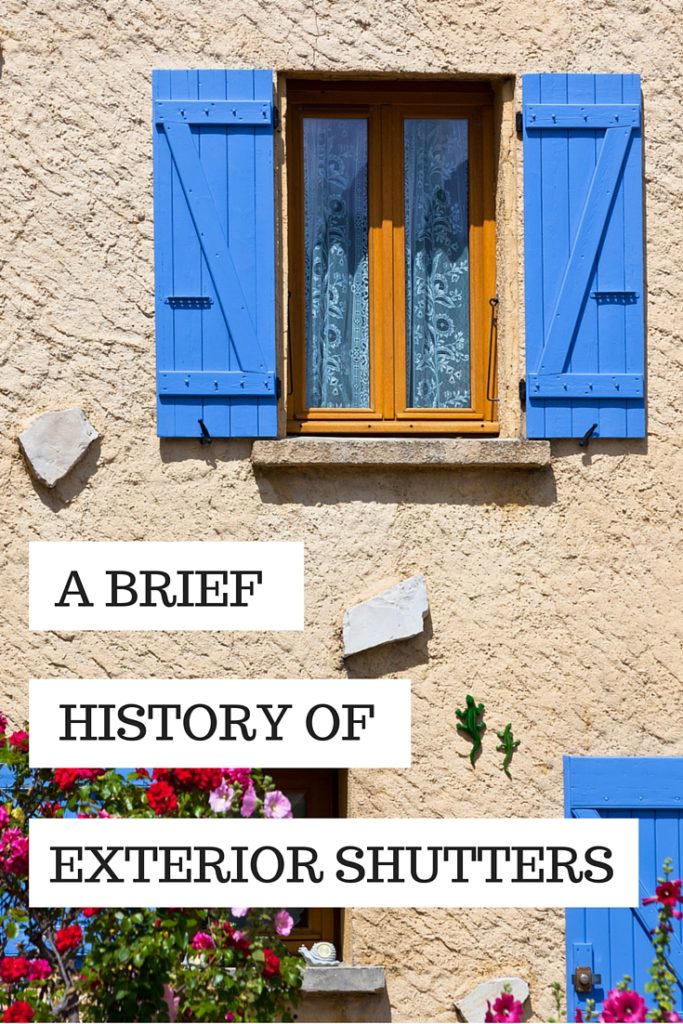01 Jul A Brief History of Exterior Shutters
A Brief History of Exterior Shutters
 Like plantation shutters, exterior window shutters seem to have their beginnings in Ancient Greece. Believe it or not, these shutters were actually designed first for the inside of a home before they were designed for the outside of a home—not the other way around. These original interior Greek shutters were made from marble, and then eventually wood once the demand for these shutters rose significantly. The original purpose of these shutters was to provide protection against the Mediterranean climate. (You can read more about these early plantation shutters in our blog post about the history of plantation shutters.) These original shutters would soon feature a louver that would allow the shutter slats to be moved upward and downward to control light and ventilation. Shutters pointed downward could shelter against rain, and closed shutters could provide privacy as needed.
Like plantation shutters, exterior window shutters seem to have their beginnings in Ancient Greece. Believe it or not, these shutters were actually designed first for the inside of a home before they were designed for the outside of a home—not the other way around. These original interior Greek shutters were made from marble, and then eventually wood once the demand for these shutters rose significantly. The original purpose of these shutters was to provide protection against the Mediterranean climate. (You can read more about these early plantation shutters in our blog post about the history of plantation shutters.) These original shutters would soon feature a louver that would allow the shutter slats to be moved upward and downward to control light and ventilation. Shutters pointed downward could shelter against rain, and closed shutters could provide privacy as needed.
Fast forward to Tudor England, the turn of the sixteenth century. Glass at this time was still an expensive luxury, and many windows featured only a glass pane on the top half, with shutters installed on the bottom half. These shutters were often made simply of wooden boards, and the shutter would be opened and closed to let in air and light as needed. Closed shutters would offer security, privacy, and insulation against extreme temperatures. Soon in the 1700s, once windows commonly began to feature glass on both the top and bottom panels, interior shutters would be used increasingly as a decorative element that covered the top and bottom panes, in addition to being functional.

Sorry, the comment form is closed at this time.